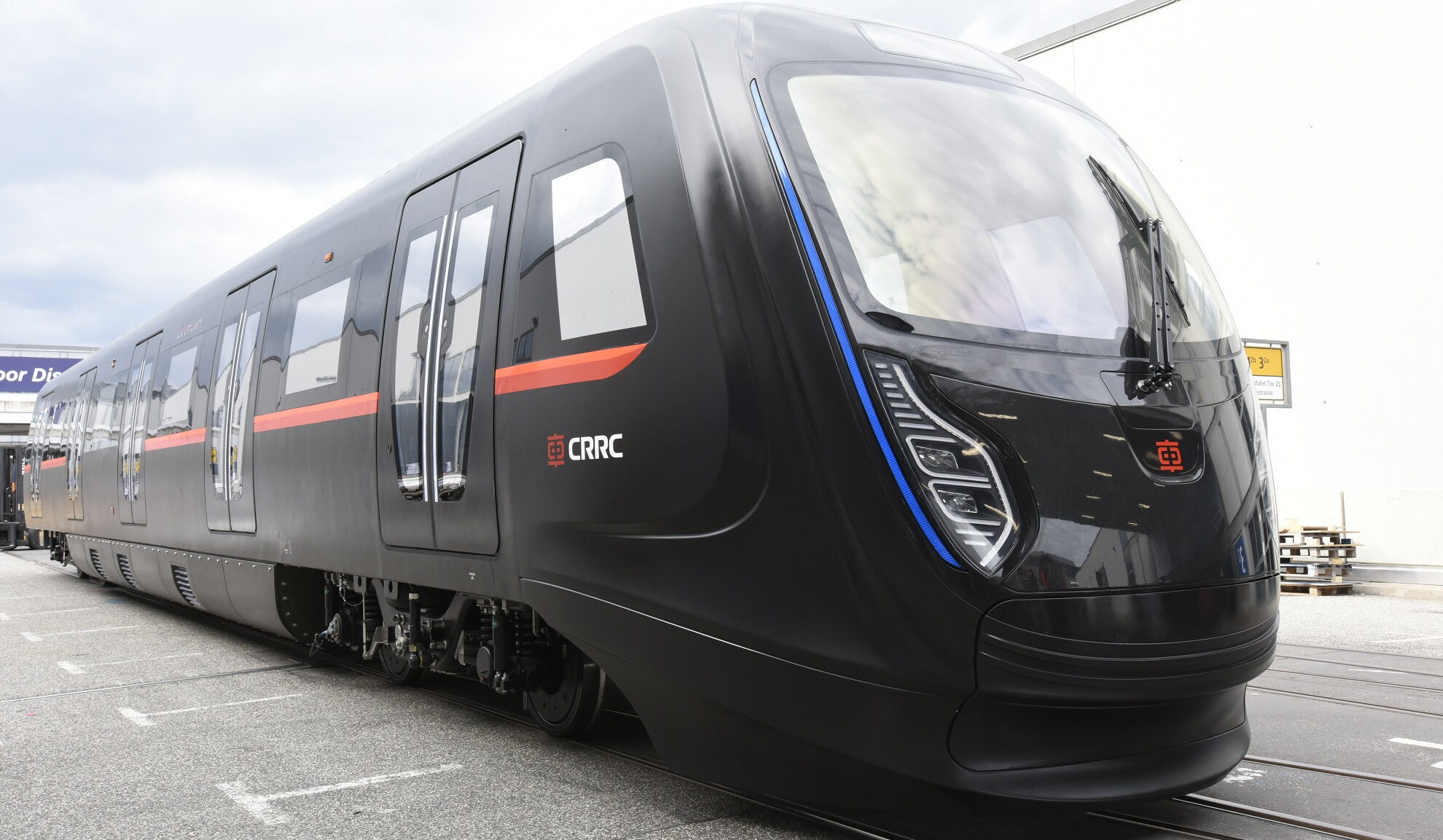China has once again positioned itself at the forefront of transportation innovation with the unveiling of the world’s first carbon fiber high-speed train.
This groundbreaking development promises to revolutionize rail travel, offering a solution that addresses both speed and sustainability.
What is Carbon Fiber?
Carbon fiber is a material known for its high strength-to-weight ratio and exceptional durability. It is five times stronger than steel and twice as stiff, yet weighs about two-thirds less.
These properties make it an ideal candidate for applications where both strength and weight are critical considerations.

The Train’s Specifications
The new high-speed train in China, developed by China Railway Rolling Stock Corporation (CRRC), is designed to travel at speeds of up to 350 kilometers per hour (about 217 miles per hour).
It features a streamlined body made primarily of carbon fiber, significantly reducing its weight and increasing its efficiency.
The use of carbon fiber not only enhances the train’s performance but also contributes to a substantial reduction in energy consumption and carbon emissions.
Technological Advancements
- Aerodynamics: The carbon fiber design allows for a more aerodynamic structure, reducing air resistance and enabling higher speeds with lower energy consumption.
- Energy Efficiency: The train’s lightweight nature means it requires less power to operate, leading to lower operational costs and reduced environmental impact.
- Noise Reduction: The smooth and aerodynamic shape of the train helps to minimize noise, providing a quieter and more comfortable travel experience for passengers.
Benefits of China Carbon Fiber High-Speed Trains
- Environmental Impact: By using carbon fiber, the train reduces its overall weight, leading to less fuel consumption and lower greenhouse gas emissions. This makes it a much greener option compared to traditional high-speed trains.
- Cost Efficiency: Although the initial cost of carbon fiber can be higher, the long-term savings from reduced energy consumption and maintenance costs make it a financially viable option.
- Passenger Comfort: The train’s design prioritizes passenger comfort with reduced noise levels and a smoother ride, making high-speed travel more appealing and accessible.
- Durability and Safety: Carbon fiber is highly resistant to corrosion and fatigue, which enhances the train’s longevity and safety. Its high strength ensures it can withstand significant stress and strain, providing a safer travel option.
Real-World Impact and Case Study
China’s commitment to advancing high-speed rail technology is evident in its extensive high-speed rail network, which spans over 38,000 kilometers, making it the largest in the world. This new carbon fiber high-speed train is set to enhance this network further, potentially setting a new standard for rail travel globally.
Case Study: Beijing-Shanghai High-Speed Railway
The Beijing-Shanghai high-speed railway, one of the busiest and most profitable high-speed rail lines in the world, serves as an ideal case study to understand the potential impact of the new carbon fiber train.
- Increased Efficiency: The Beijing-Shanghai route currently sees trains traveling at speeds of up to 350 kilometers per hour. The introduction of the carbon fiber train on this route could improve travel times due to its enhanced aerodynamic design and reduced weight.
- Reduced Emissions: This route is a major contributor to reducing air traffic between Beijing and Shanghai, significantly cutting down on carbon emissions. The new carbon fiber train could further lower the environmental impact, aligning with China’s goals of reducing its carbon footprint.
- Economic Benefits: The enhanced efficiency and reduced operational costs could lead to higher profitability for the rail line, demonstrating the economic viability of investing in advanced materials like carbon fiber.

The Future of High-Speed Rail
China’s unveiling of the carbon fiber high-speed train marks a significant milestone in the evolution of rail travel. It addresses critical issues of speed, efficiency, and sustainability, setting a new benchmark for the industry.
This innovation is likely to inspire other countries to explore similar advancements, potentially leading to a global shift towards more sustainable high-speed rail systems.
Global Implications
The success of China’s carbon fiber high-speed train could have far-reaching implications:
- Technological Adoption: Other countries may follow suit, adopting carbon fiber technology for their own high-speed rail networks, leading to a global reduction in carbon emissions from rail transport.
- Industry Standards: The train could set new industry standards for high-speed rail design and manufacturing, pushing the boundaries of what is possible in terms of speed, efficiency, and sustainability.
- Collaborative Innovation: This breakthrough may encourage international collaboration in the field of transportation technology, fostering a more unified approach to addressing global challenges such as climate change.
Conclusion
China’s revolutionary carbon fiber high-speed train is more than just a technological marvel; it represents a significant step forward in the quest for sustainable transportation solutions.
By addressing the key challenges of weight, efficiency, and emissions, this train sets a new standard for high-speed rail travel.
As the world continues to seek innovative ways to combat climate change, China’s pioneering efforts in this field offer a glimpse into a future where high-speed travel is both fast and environmentally responsible.
The launch of this train is a testament to the power of innovation and the potential for new materials and technologies to transform industries. It stands as a beacon of progress, inspiring hope for a future where sustainable transport solutions are not just possible but are the norm.
Further Info – Adda247 / EconomicTimes
You May Also Like:

